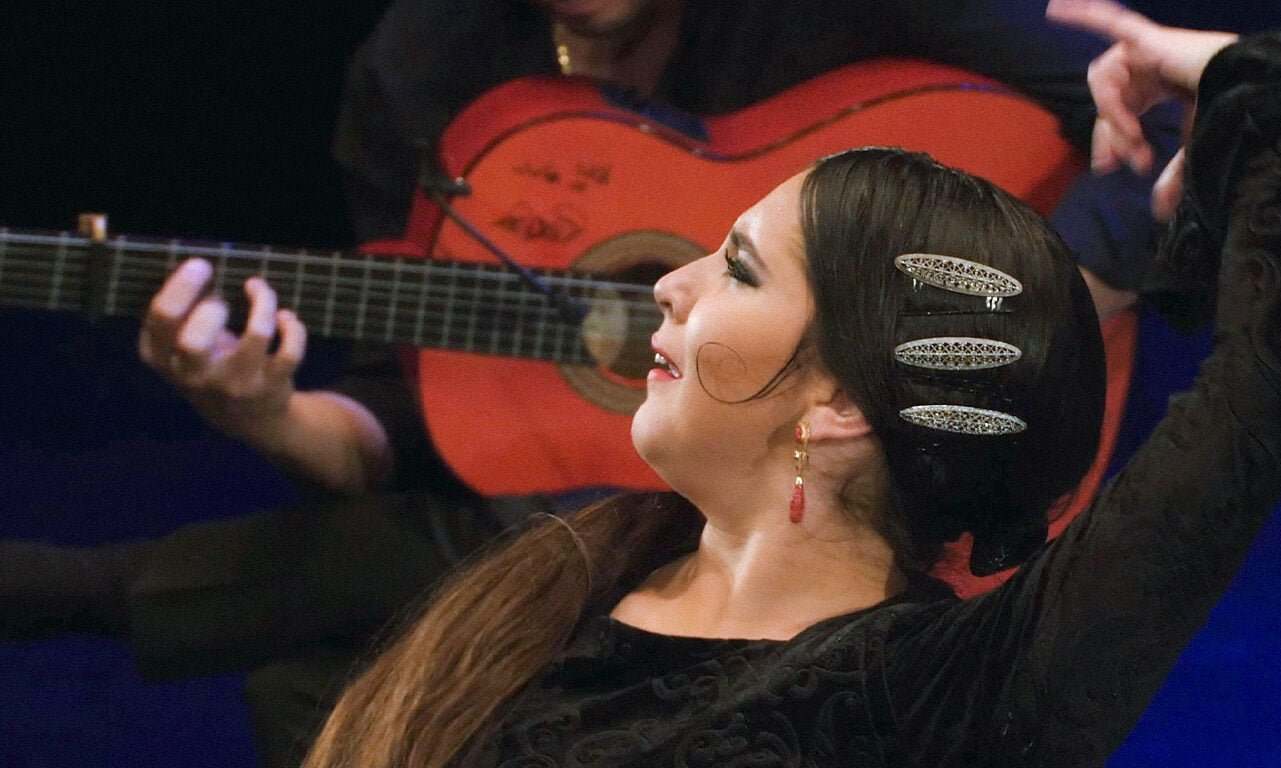Flamenco began with singing, which is why flamenco palos (forms) tend to have characteristics more related to singing than to instruments or dance. But everything evolves, and flamenco is no exception.

Flamenco “palos” are styles or varieties of flamenco. This art form was associated with flamenco singing in the beginnings of flamenco about two centuries ago. The toná may be the first palo of which reference is known.
Some flamencologists see the origin of flamenco in dance and not in singing in the texts of La Gitanilla by Cervantes (17th century).
Each style has its own characteristics based on the meter, harmony or modes, but also whether or not they are festive, or depending on the region. This set of specificities is what distinguishes them, although the issue of meter is basic (where most emphasis is placed). So, let’s take a look at the basic measures:
-
Ternary rhythm is the one with three beats, as in the sevillanas.
-
Binary time or quaternary, two-beat (binary) or four-beat (quaternary) time signature. Rumba would be among them.
-
Flamenco or amalgam, 12-beat or alternating rhythm. This rhythm is the sum of two and is the most characteristic of flamenco. Bulerías or soleás are amalgama.
In turn, each of these measures can be given in three different airs or tempos: slow, medium and fast.tempos: slow, medium and fast.
And how many are there?
In this article expert musicians and trainers talk about this controversial issue. But, the most accepted is the classification of a great researcher, José Blas Vega, who classifies them in three groups:
Group I: primitive and basic flamenco songs and their derivatives.
Romances: corridos, corridas, carretillas, dedicuras.
Tonás. Martinetes, carceleras, deblas and tonás.
Seguiriyas. Fiviana and serrana.
Soleares. Alboreás, polo, caña, peteneras, bulerías, romances.
Tangos. Alsoientos, tanguillos, mariana.
Cantiñas. Alegrías, caracoles, mirabrás, romeras, cantiñas, alegrías of Cordoba.
Group II: flamenco songs derived from fandango
Songs of Málaga. Rondeña, jabera, verdiales, local fandangos, malagueñas, local local, personal malagueñas.
Songs de Levante and Songs de las Minas. Granaína, media granaína, taranto, taranta, cartagenera, minera.
Fandangos of Huelva. Inocal styles and personal styles.
Fandangos of personal creation.
Group III: varied flamenco songs.
Of Andalusian folkloric origin. Sevillanas, saetas, campanilleros, villancicos, bamberas, pregones.
Hybrid or uncertain origin. Farrucas, garrotín.
Of Spanish-American origin. Guajiras, milongas, colombianas, rumbas.
Flamenco “palos” according to discipline
Because flamenco has its origins linked to singing, many palos (forms) continue to respond to this discipline.
Dance and the importance of the guitar or other instruments were either non-existent or an accompaniment or adornment to the singing. However, they developed independently and the cantaor may even accompany or complement the instrumental composition or the dance troupe.
So, as Juan Cruz Palacios explains in an article in the Instituto Cervantes, each flamenco palo has “its own favorite”, that is to say, they are better suited to dance, singing, or instrumental versions.
For example the farruca is hardly ever performed in cante or toque. On the other hand, in dance, it is one of the flamenco palos (styles) that are at their best. This does not mean that they do not exist in cante, in which Antonio El Sevillano can be a good reference; or that they are not played, as in the case of recordings by Paco de Lucía, Sanlúcar or Paco Cepero. Most of the time, they are voices and instruments for a good dance show.
Another example is the rondeña, a style typical of the guitar, less often reproduced in cante repertoires and much less in dance.
Questions (and answers) about flamenco palos (forms)
What is the first flamenco palo?
The tonás, which arose from the popular gypsy songs of the 12th century in Seville and Cadiz, mainly. They were born without accompaniment, only with clapping, banging on the table…
How many styles are there?
Around 50, not counting geographical variations and styles.
What are the most important styles?
Although they are all, these 8 flamenco styles can be considered fundamental: seguiriya, soleá, tientos, tangos, cantiñas, fandango, bulerías and alegrías.
What is the most typical compass?
The amalgama, on which alegrías, bulerías and soleá are based.
What is the best flamenco palo (style)?
The one that transmits the most to you. Flamenco is feeling, and each flamenco palo has, apart from fixed characteristics (such as the compás), a part of improvisation and the artist’s style to make you participate in his emotions..
